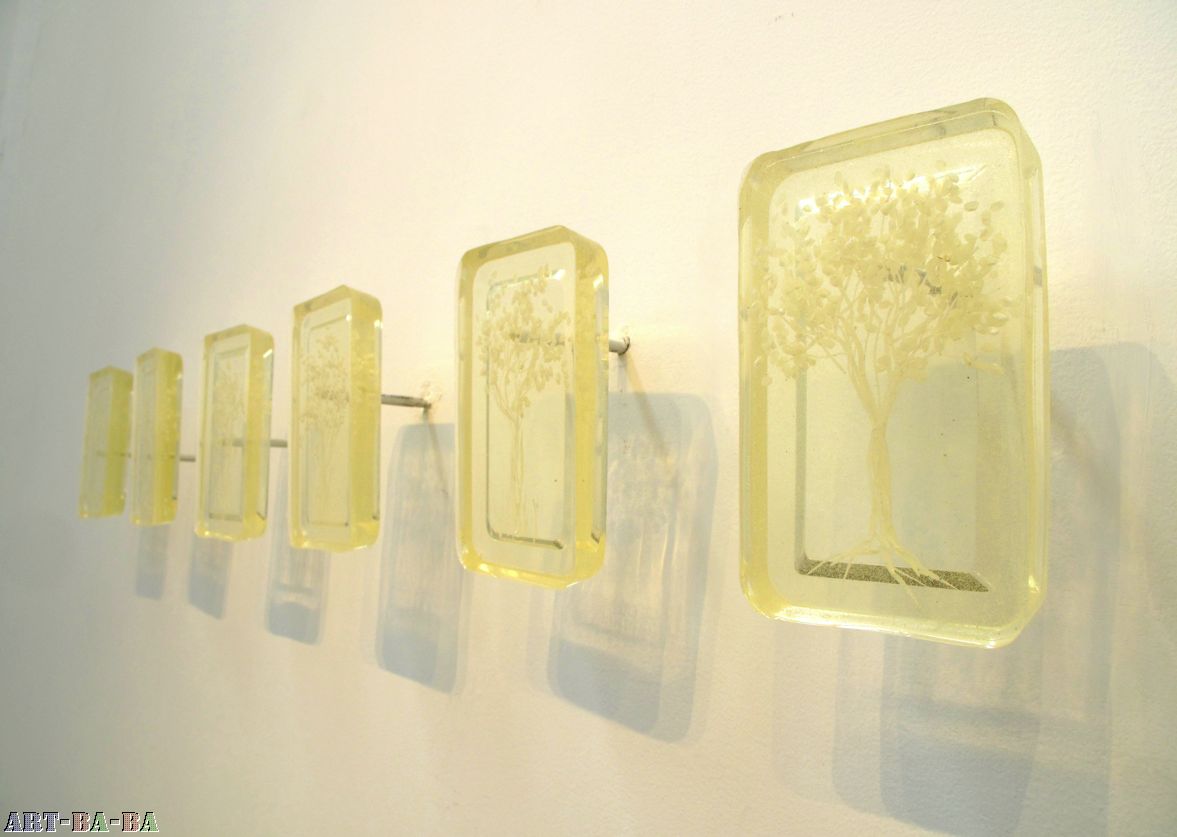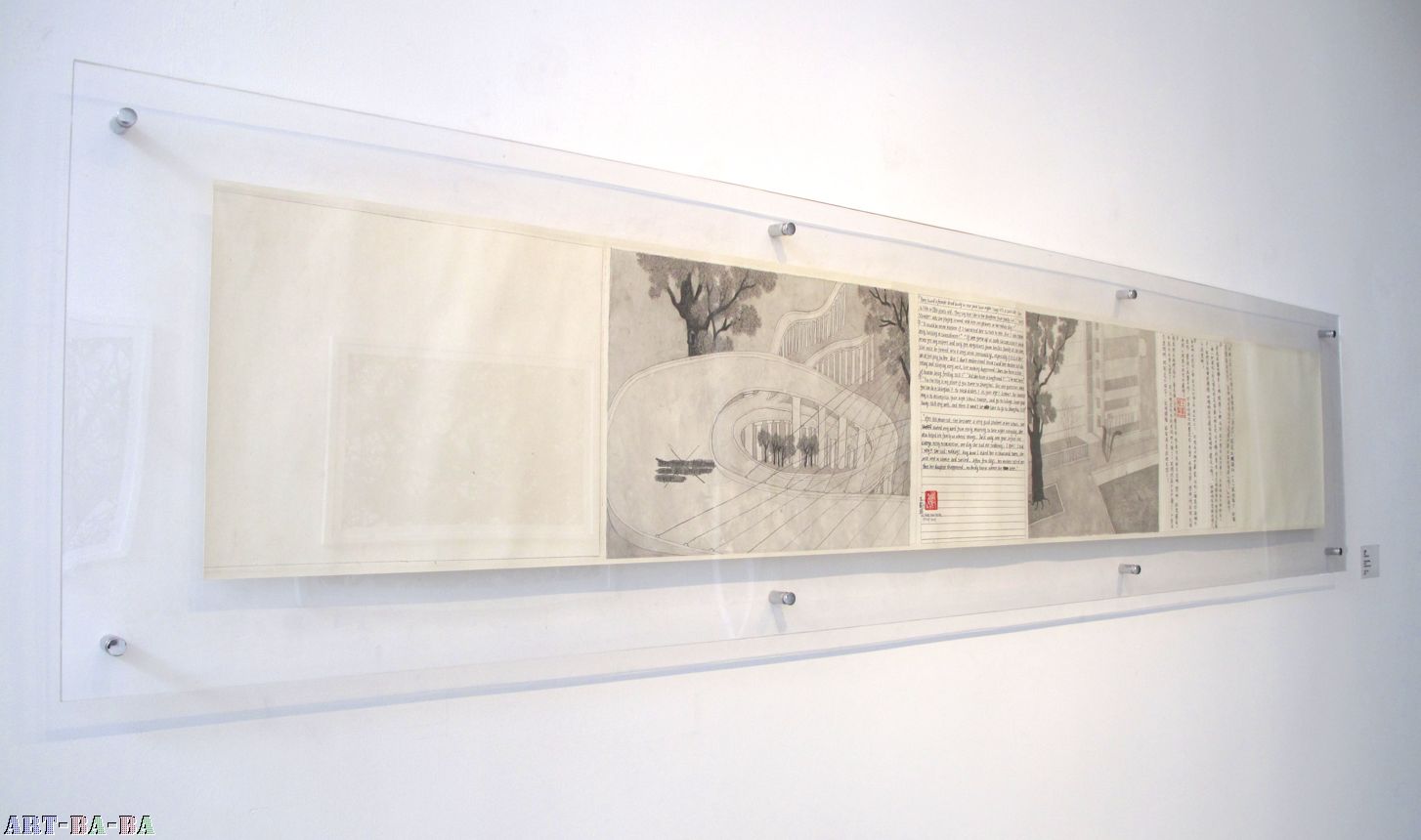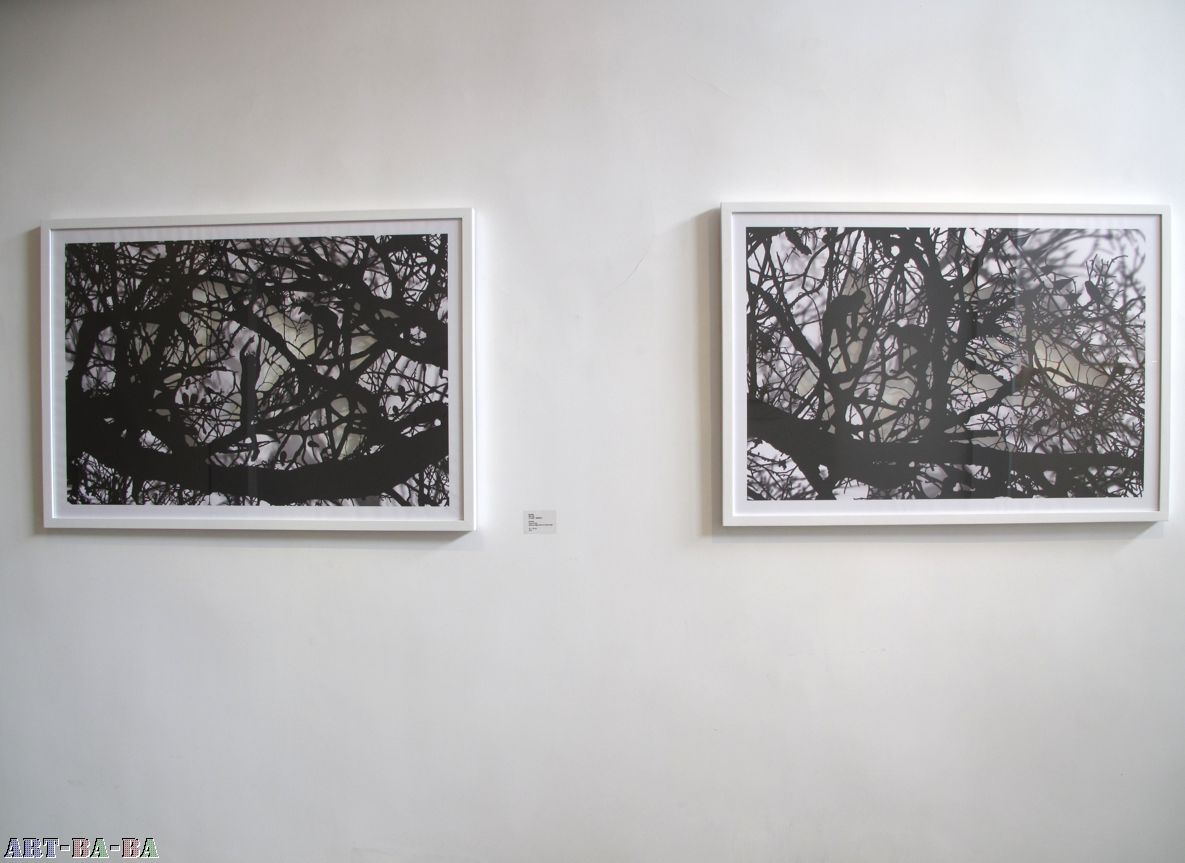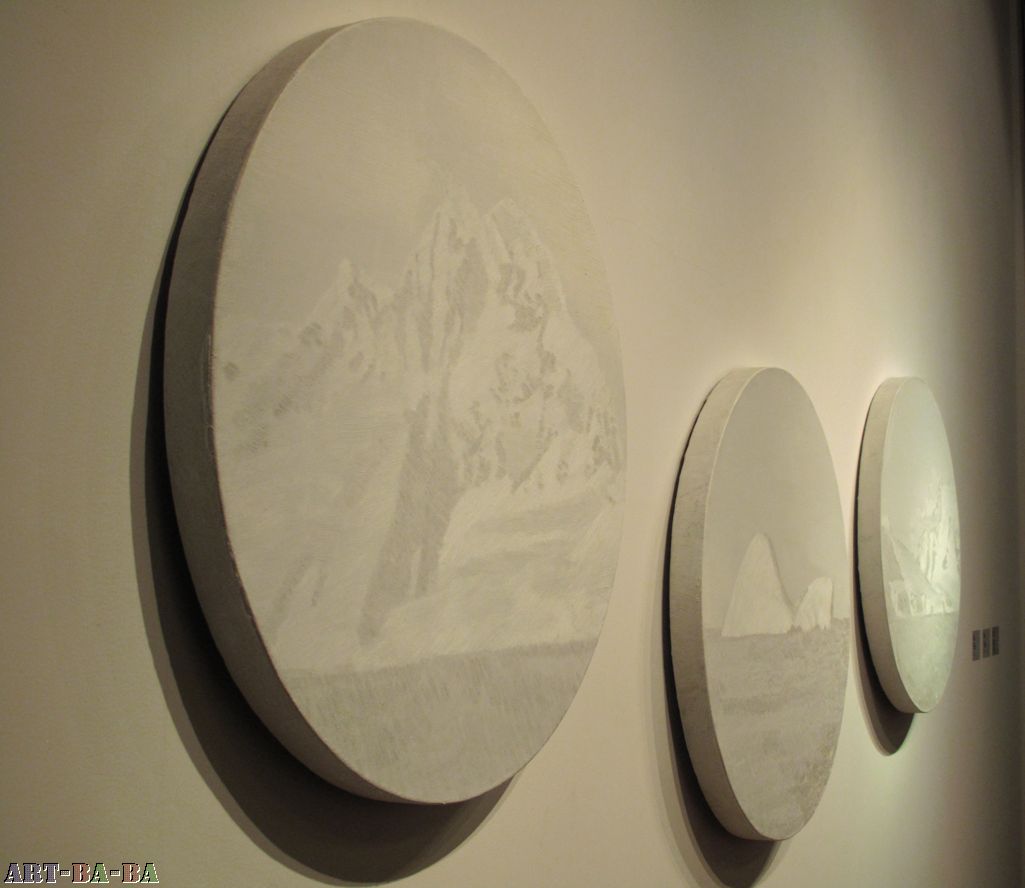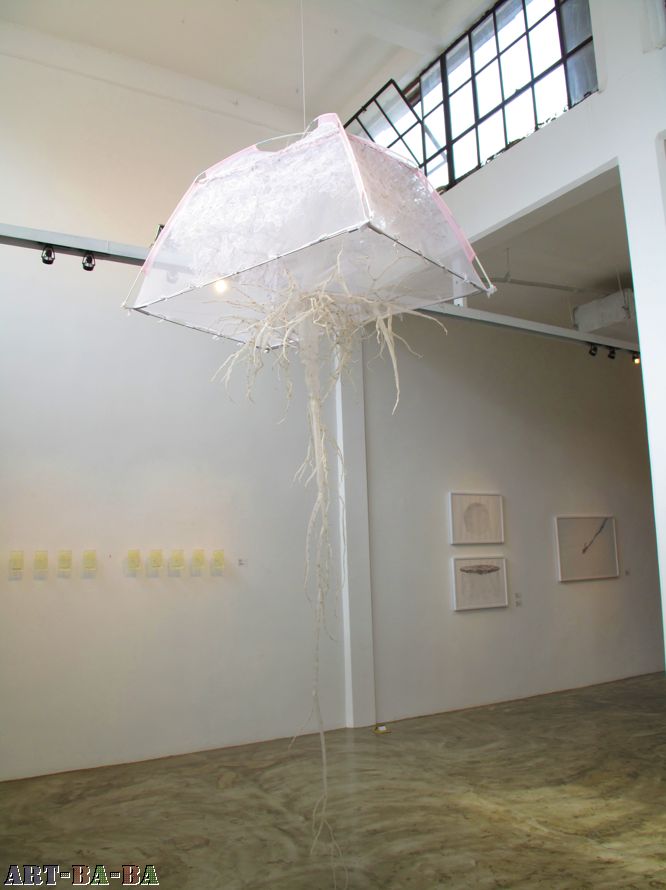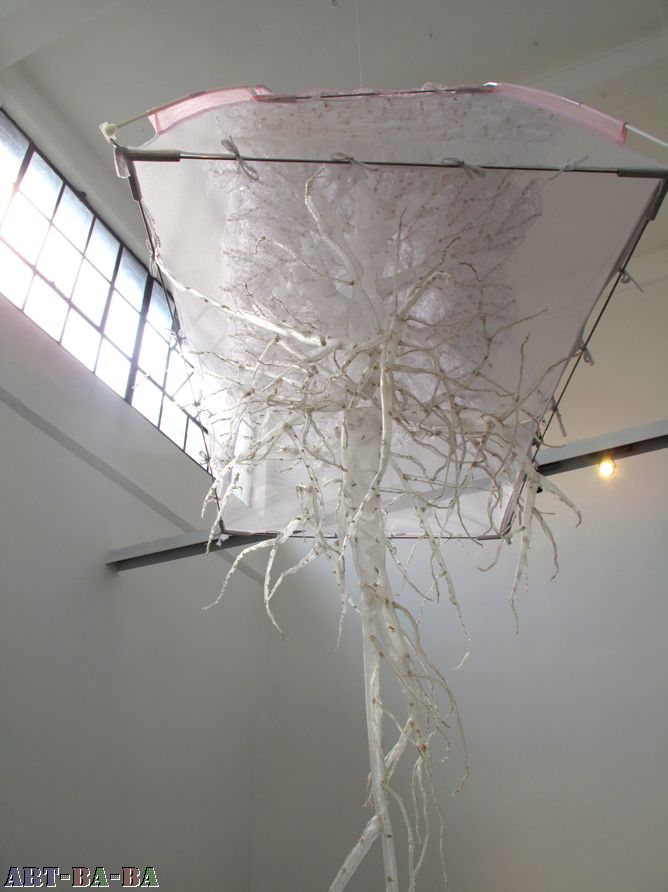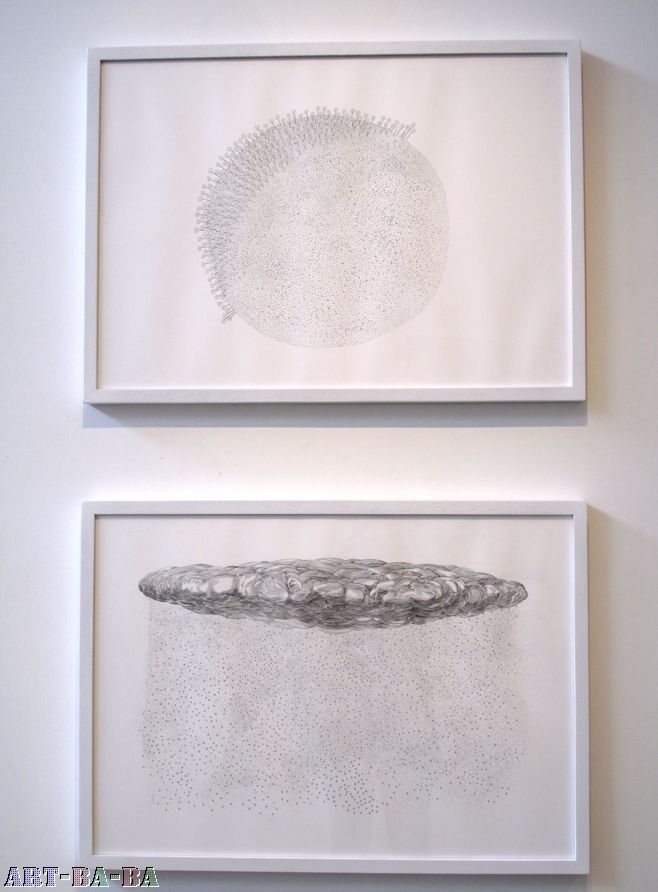当代艺术的十五个论题:怎样不做一个浪漫主义者?
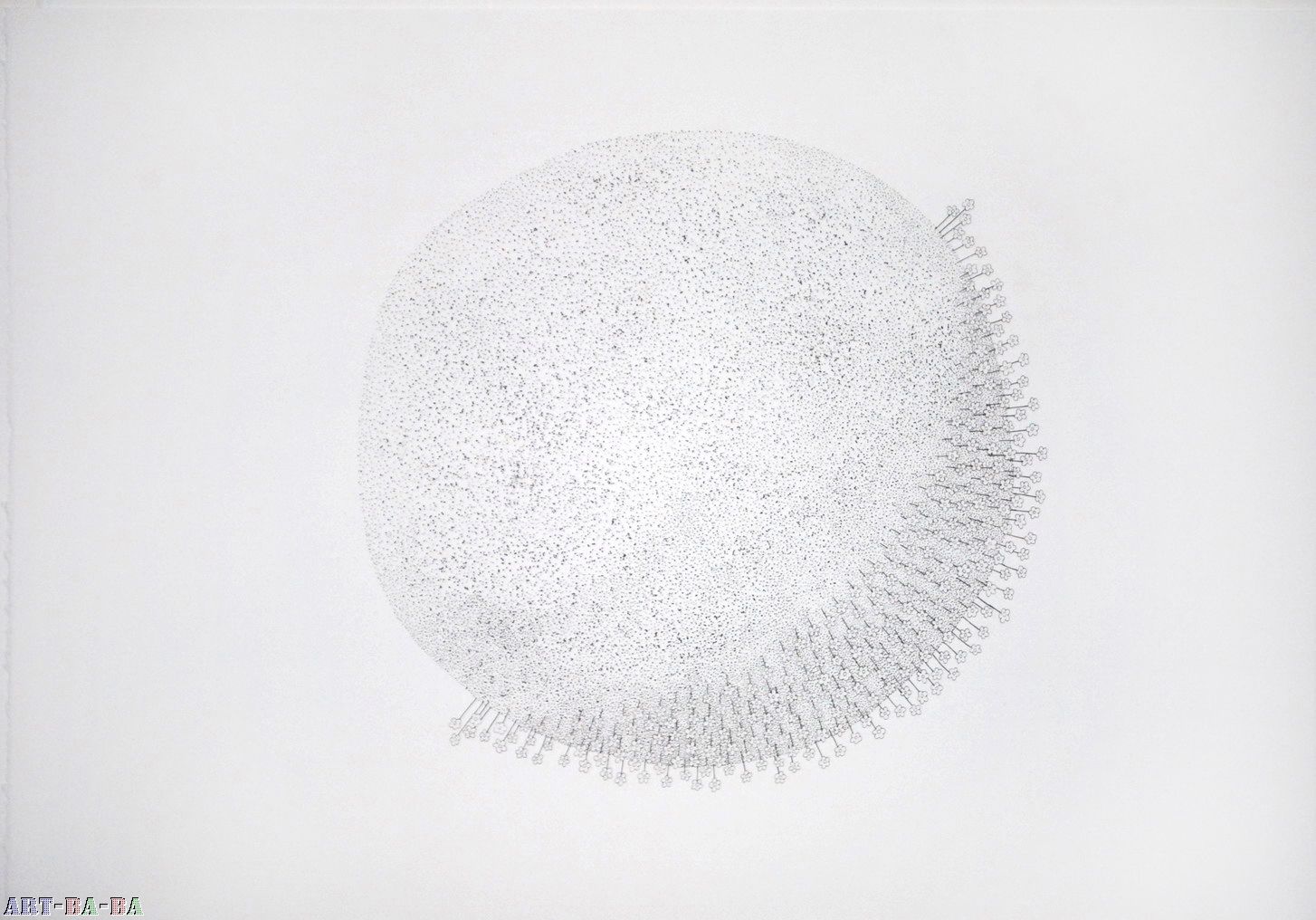

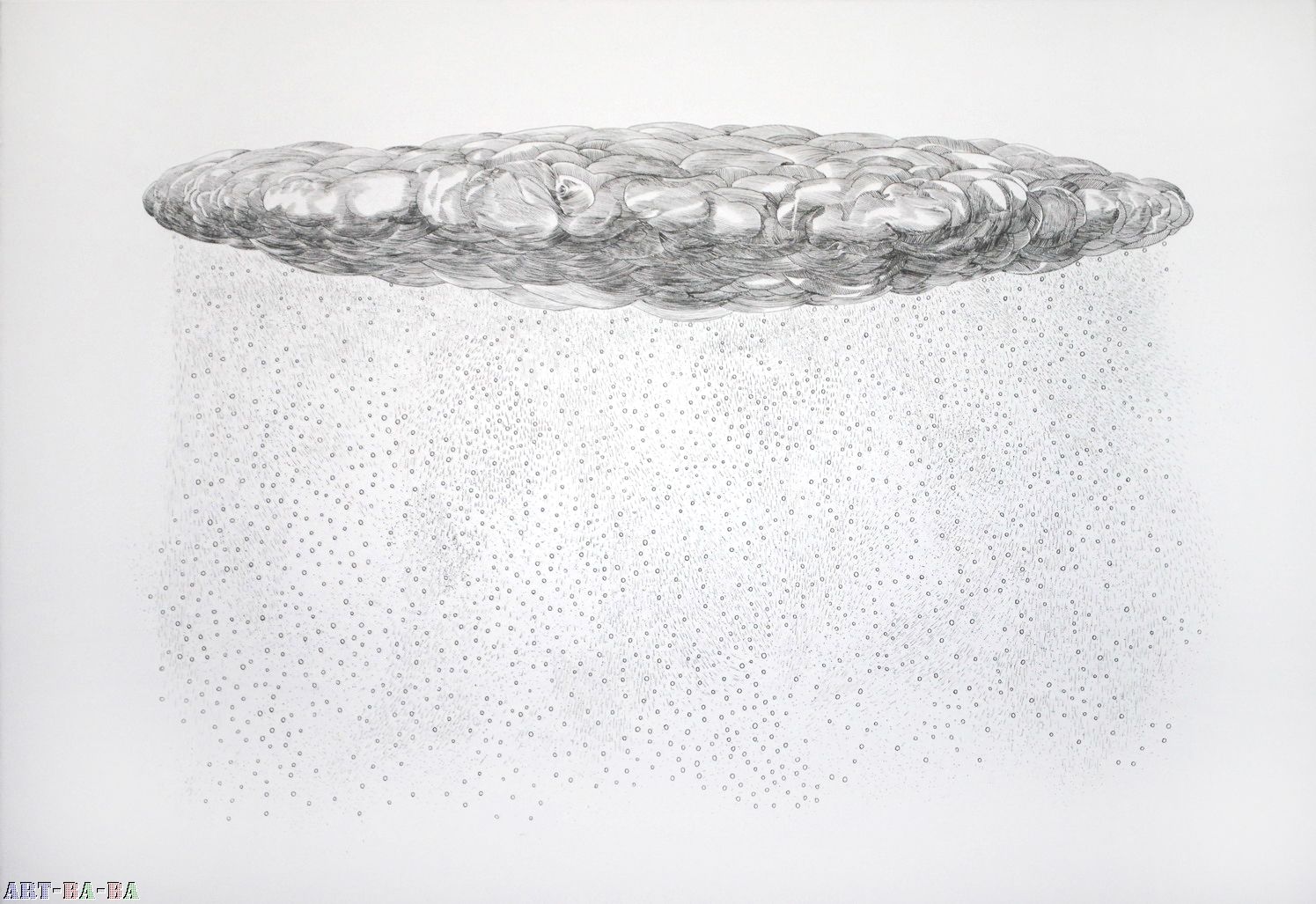
Chen Xi
Icebreaker, pigment ink and marker on fabriano paper, 70 X 100cm, 2011
Moon Light, pigment ink on fabriano paper, 50 X 70cm, 2011
Rain and Snow and Sand and Wind mixed, pigment ink on fabriano paper, 50 X 70cm, 2011
I provide a seemingly irrational vision. This refers to the irrationality of the world we all live in ¬– how strange it is to be human, to witness the oddity of living. It refers to the idea that life is meaningless and humorous and that societal narratives are simply constructed illusions developed in order to make living palatable. There are lots of things that happen in my drawings, which point towards how we as humans live in an inexplicable condition that is beyond our control.
陈熹
破冰船,水彩纸上针管笔马克笔,70 X 100cm, 2011
月光,水彩纸上针管笔,50 X 70cm, 2011
雨夹雪风沙,水彩纸上针管笔,50 X 70cm, 2011
我创作了一些看似荒谬的作品。这种荒谬感来源于我们所处在的这个世界——生而为人,目睹生活的种种不堪是多么怪异。认为生活毫无意义、充满嬉笑怒骂的念头,认为社会话语只不过是人造的幻象,用来自欺欺人、傻乐过活的念头。我的画作指出人们无法去控制莫名的生活环境。
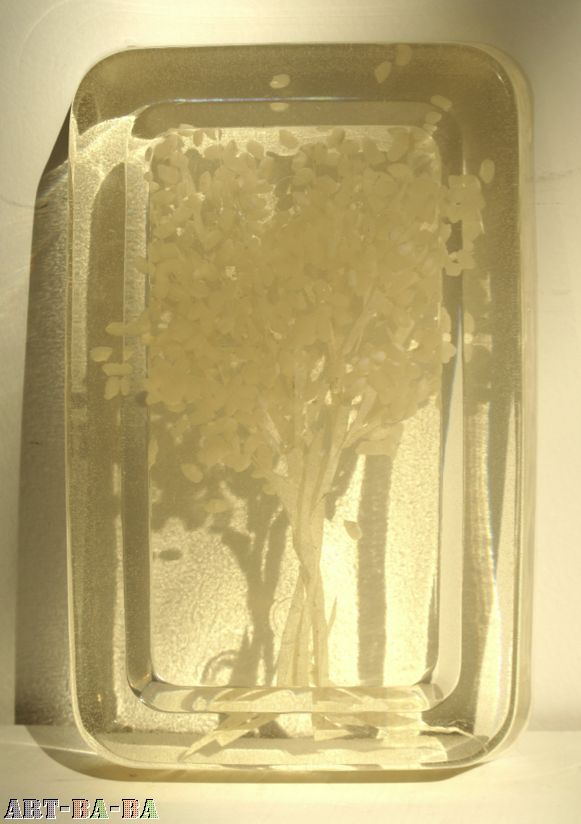
Monika Lin
Take-Away, rice, resin, masking tape, dimensions variable, 2012
Six years ago, after having encountered grain vendors on almost every block of my neighborhood I began thinking actively about "rice economies." This term refers to countries and regions with low labor costs, as it is labor-intensive to cultivate rice. The vendors in my neighborhood offer various price points, qualities and varieties of rice, all of which brought to mind further questions about the nature of "rice economies" and their specific values and consequences. This eventually led me to the idea of rice itself as a medium.
The neighborhood street vendors who offer quick, cheap street meals in my neighborhood offered another key point of departure in this vein of exploration. These “economy rice” meals, targeting the working population, typically offer anywhere from 10-15 troughs of pre-cooked food including meat, vegetables, eggs and tofu. Customers select a combination, which is served accompanied by a portion of steamed white rice in a Styrofoam container.
In contrast, the plastic to-go containers I have utilized here are used to carry out/deliver food from higher-end restaurants. As a pack-rat, I had amassed a large quantity of them (whereas I would throw away the Styrofoam containers). As I delved further into thinking about the economics of food, I started to experiment with using rice as a medium and the plastic take-away boxes as the containing form. The result is a series of pieces made from mundane materials using a commonplace subject, trees, as a means to explore the tension between perceived high art and a popular/craft aesthetic while addressing themes of waste, the economy and labor, as well as the function of the gallery space.
Monika Lin
打包盒,米饭,树脂,胶带,尺寸可变,2012
六年前,在我家小区,几乎每隔几幢楼就有一家卖米的店,由此我开始思考"水稻经济":在低劳动成本的国家与地区,水稻种植是劳动密集型产业。我家小区的米店供应不同价格、质量与品种的稻米,这让我追问并深思"水稻经济 "的实质及其特定价值与后果。最终,我想到把稻米作为创作的媒材。
小区附近的小街上有很多盒饭店,供应廉价快餐,这在既有线索上给了我又一启发。这些 “水稻经济”盒饭主要面向工薪阶层,一般有10-15种不同菜色可供选择,有荤有素、有蛋有豆腐。食客自己挑选菜色,随意组合,店家把菜盛在泡沫塑料盒里,再加一客饭。
但讽刺的是,更高档餐厅的外卖也用这种塑料打包盒。我常叫外卖,于是积攒下了许多(照往常我都会把泡沫塑料盒扔掉)。随着我对粮食经济更为深入的了解,我开始尝试将稻米作为媒材、塑料打包盒作为容器进行创作实验。于是完成了一系列脱胎于寻常材料的作品,其创作主题是司空见惯的树木,以此探索高雅艺术与大众/民俗审美之间的紧张感,同时探讨浪费、劳动力与经济、画廊空间的功能等问题。
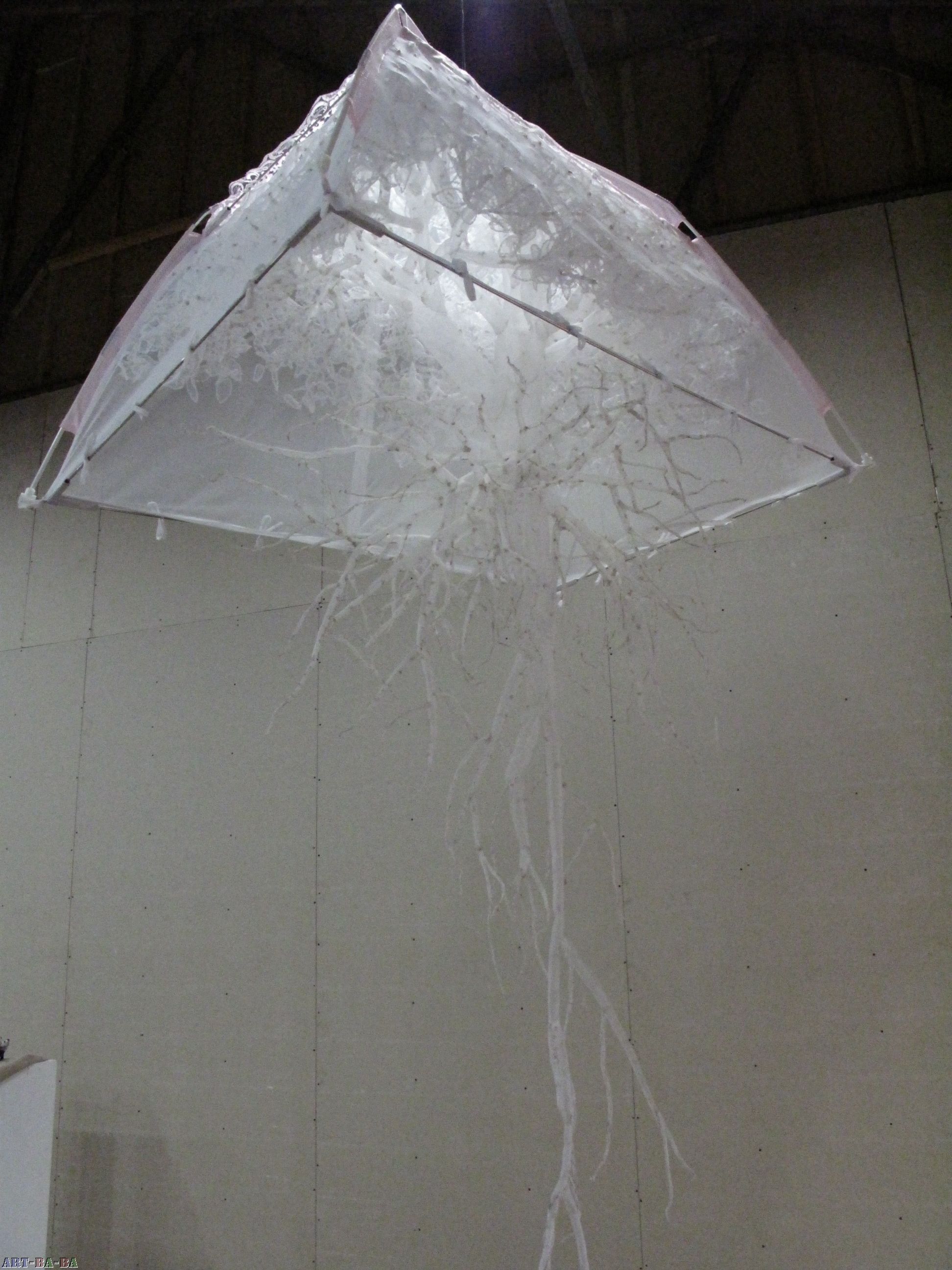
Ji Wenyu and Zhu Weibing, “No one in the Garden of Eden,” mixed media, 310 x 126 x 87cm, 2010
Inside a two-meter tall mosquito net there is a transparent gauze tree. The elongated roots of the tree extend below the mosquito net and almost touch the floor. The topic is “No One in the Garden of Eden.”
After eating the forbidden fruit, we start from innocence and after that, what did we find? It was from this moment that we began to look for struggle, and at the same time greed emerged. God Very wisely predicted that all would not be peaceful under heaven and angrily cast Adam and Eve from Eden. After this Eden retained its innocence, still beautiful, still flourishing, an unending sea of dazzling brilliance. In order to maintain it or to expand its growth, the tree’s roots needed even more nourishment. They became dense and thick, growing down, and growing long. The started to seek, and the more they sought, the more they found, and they became greedy. Nutrients! Nutrients! And this time God was silent.
计文于+朱卫兵,没有人的伊甸园,混合媒材,310 x 126 x 87cm,2010
在一个悬挂有两米多高的蚊帐里用纱做了一棵透明的树,树的根从蚊帐的下端延伸生长下来直到临近地面,题目是《没了人的伊甸园》。
人在偷吃了禁果后,开始从无知中自觉到了什么,从此有了追求和奋斗,同时也渐渐萌发了贪婪。上帝英明地预见到了天下将不会太平了,愤怒地将人逐出了伊甸园。以后伊甸园照样无知、照样美丽、照样茂盛,层层叠叠而耀眼透亮,为了保持或者为了更加壮大,它们的根须就越加的需要养料而变得繁密和粗壮、越加地往下和往长里生长,它们开始有了追求,而且是越加地追求起来,而且是越加地变得贪婪…养料,养料…!!!此时上帝见状却沉默了…
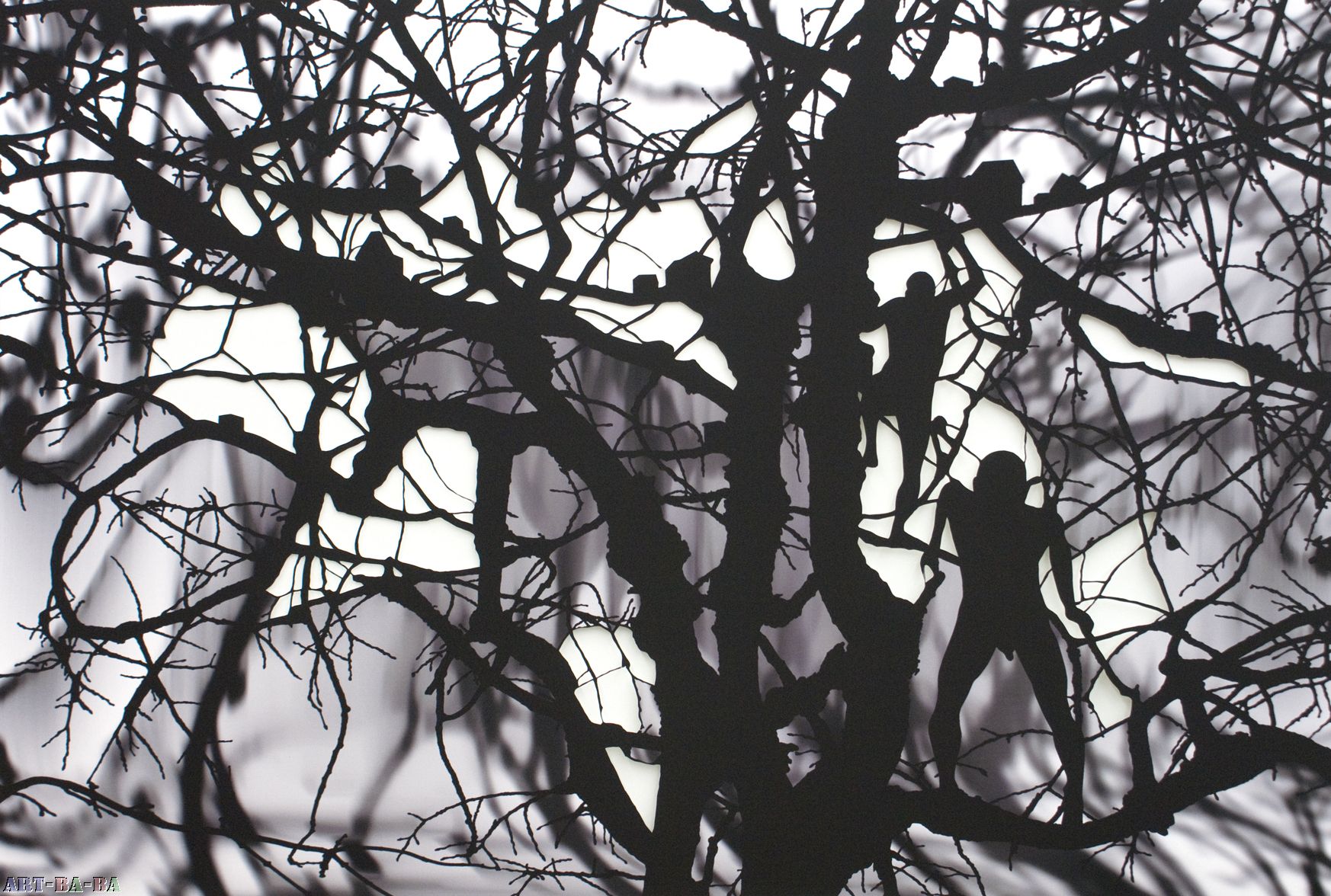
Ed Pien, Curious Creatures, 87 x 125 cm, hand-cut digital print on arches paper, 2011
Ed Pien, Leap of Faith, 87 x 125 cm, hand-cut digital print on arches paper, 2011
In these two hand-cut digital prints, I continue exploring concerns that I began in this overall series entitled “Blur Cuts.” In the two most recent works, “Curious Creatures” and “Leap of Faith,” there is a note of playfulness. Figures and birds commingle and reside in a natural world where mystery and life forces abound.
Ed Pien,好奇生物,87 x 125 cm,手工剪纸(数码输出),2011
Ed Pien,信仰飞跃,87 x 125 cm,手工剪纸(数码输出),2011
我用这两幅最新的手工剪纸(数码输出)作品《好奇生物》与《信仰飞跃》继续已有系列“模糊剪裁” 的议题,并加入了某种游戏感。人与鸟同居于自然,神秘感与生命力共长。

Shi Jing, White Line, oil on canvas, 60cm, 2006
This work is called “White Line” 2006 (there are 16 in total). These works emerged from a global study of glaciers and oceans. The surface of the water in this work and in all the other 15 works is at the same level. Now this water and these iceburgs have already dispersed to different corners of the globe.
史晶,白线,布面油画,60 cm, 2006
这件作品是《白线》(2006年,共有16个)中的一个,它来自对全球冰川及海洋的一次考察,图中的水面和其他15个在同一平面上,现在它们已分布在全球不同的地方。

Ge Fei and Lin Zhen, After, Video 3:27 mins, 2008
On the Mongolian Steppes a snowstorm suddenly arises.
葛菲+林缜, 之后,录像,3:27 mins,2008
蒙古高原上突如其来了一场暴风雪。
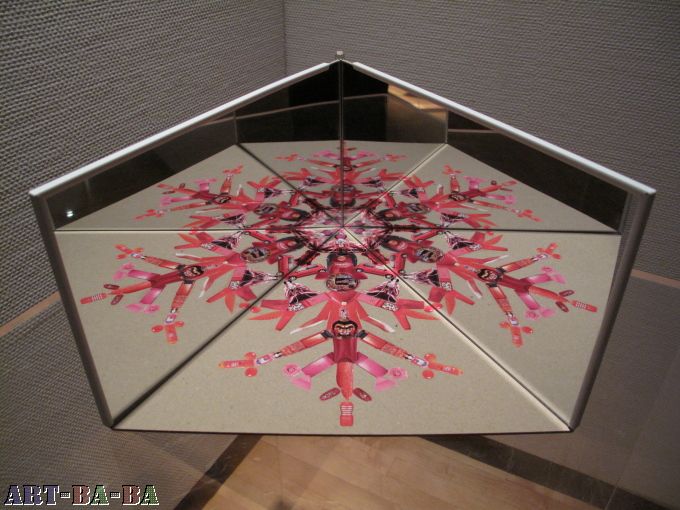
Chen Hangfeng, It Comes and Goes, stop motion animation, 1:24 mins, 2011
This stop motion animation records the process of making a collage. The images are of different consumer products, that I cut out from free flyers, leaflets, advertisements and junk mail, which I collected during my residency in Sapporo.
Two mirrors are placed at 60 degree angles and it almost looks like these consumer products are worshiping themselves in the manner of the Shinto goddess Amaterasu. Therefore each collage repeats, which has the effect of looking like a snowflake pattern. The work acts as a tribute to Ukichiro Nakaya, who created the first artificial snowflake in Sapporo. But what will happen if there is no snow in the future?"
陈航峰,来来去去,定格动画,1分24秒,2011
这段定格动画记录了制作一组拼贴装置的过程。拼贴画所用的素材剪自一些免费传单、折页、广告宣传册与垃圾邮件,这些素材均是我在扎幌驻地期间收集的。
两面镜子以60度夹角固定,这些消费品宣传的碎片好似正以神道女佛——天照大神的姿态互照膜拜。每段拼贴都有所重复,组合起来看像雪花的图案。这是一件向札幌首片人造雪花的发明者 Ukichiro Nakaya的致礼之作。但,如果未来没有雪了,那会怎样?

Robert Davis, In the Bleak Midwinter, mixed media collage, 75 cm X 54.5 cm, 2012
In the bleak mid winter, frosty wind made moan
Earth stood hard as iron, water like a stone;
Snow had fallen, snow on snow, snow on snow,
in the bleak midwinter, long, long ago.
In the Bleak Midwinter,
Christina Rossetti, text
Shanghai Winter can be at once freezing, rainy and cloudy with glimpses of sun. We tend to hunker down during this time, limiting movement to spending time with friends and watching DVDs.
In this work, I picture Shanghai as a city engulfed in fog, ice and the ever-present cloud of pollution. Throughout the artwork are words and Winter remembrances of friends. These elements transform the city into a serial scene of contemplation. The mountain in the distance is a combination of scenes from North America and China and represents our romantic notions of Winter.
Robert Davis,戚隆冬,综合媒材,75 cm X 54.5 cm,2012
戚隆冬,寒风啸
地如铁,水如岩
雪飘雪落雪上雪
戚隆冬,曾几时
戚隆冬,
Christina Rossetti作
上海冬日可以是寒冷而多雨多云的,太阳偶有探头。在如此季节里,我们更青睐懒散度日,看看碟片,或与亲朋好友家中。
在这件作品中,我假想上海被雾、冰与污染云烟所吞没。作品中满是纪念友人围炉夜话的只言片语。这些元素将城市转变成一系列可供沉思的景观。远景中的山峦是 北美与中国真实地貌的拼接,象征着几缕冬日的浪漫情怀。

Zhu Ye, Solitude, 70 x 50cm, acrylic on canvas, 2011
There are one or two barely perceptible figures in the center of the painting who look as if maybe they are swimming. In this work I’ve created a scene of peace and solitude which is inspired by a Japanese Zen garden.
朱晔,孤独,70 x 50cm,布面丙烯,2011
画面中央有两个依稀可辨的身影,看似在游泳。这幅作品中静谧与孤独的景象得自日本的一处禅道花园。
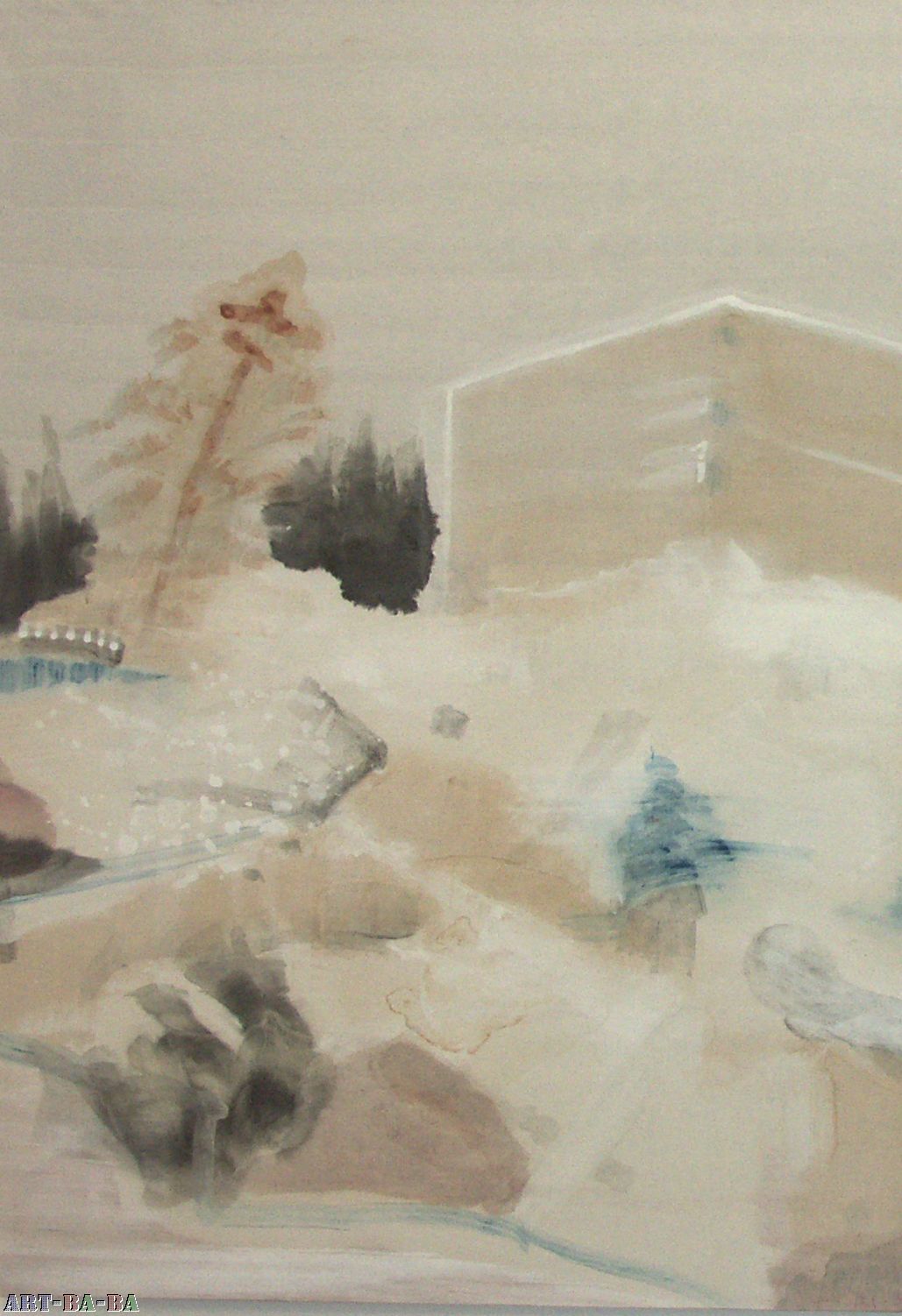

Chai Yiming
Untitled, water color and ink on xuan paper with cloth mount, 70 x 100cm, 2010
Winter in Chinese has the connotation of freezing, in a more genteel language we can say that all business has stopped or slowed. The ancients said, “In fall we harvest; in winter we store.” But the word “dong” for winter is also pregnant with the meaning of gathering. The contradictions of life are all present in these seasons. Is there any difference between painting in the winter and painting paintings of winter? Why don’t we let the painting answer that question.
柴一茗, 无题,水墨水彩在宣纸裱布,70 x 100cm, 2010
冬在中文里有冻结的意思,望文生意也是说一切都停止了都缓慢了。
古人说秋收冬藏,冬又有孕育聚集之义生命循环往复都在四季之中。
冬天画画和画冬天的画有何不同呢?还是让画来说话吧。
展览现场照片
